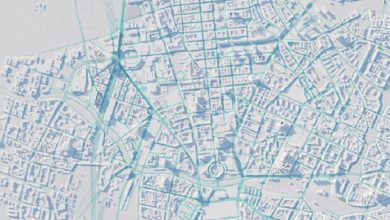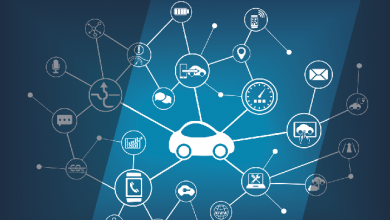Prevent insurance fraud
How mobile telematics helps insurance companies to improve claims management

The current generation of smartphones can increase and broaden our abilities to improve our lives. With great potential in product development, mobiles can help simplify the process of catering to the customers’ needs. For a reliable example, we can look at how digitalization is being introduced in the field of insurance, resulting in more and more ways of connecting with customers. Transition to the new digital and mobile services increases the rate at which products appear on the market and become available for everyone. On the other hand, there is a major setback for digital services development that insurance companies are compelled to face — insurance fraud.
MOBILE TELEMATICS TO PREVENT $40 BILLION LOSS ON INSURANCE CLAIMS FRAUD
Automobile insurance claims fraud is one of the biggest and most frequent kinds of fraud, that can cost companies billions of dollars. Auto insurance fraud diverges from misrepresented facts on insurance applications, enlarged insurance claims, faked accidents, claims submitted for exaggerated damages and injuries that never occurred, and even to falsifications of auto theft. The FBI study showed that the total cost of insurance fraud in the U.S. is estimated to be more than $40 billion per year, meaning that on average, a customer will have to spend between $400 and $700 per year in the form of increased premiums.
That is where mobile telematics can step in and take on a huge role of fraud deterrent. Devices that are constantly monitoring customers’ data make it almost impossible to cover up instances of violation, made to inflate (or create) an insurance claim. And vice versa, just as simple it can help to treat compliant clients accordingly. Making a car location, its behavior, and motions fully transparent, drivers are less likely to fake, make up, or exaggerate the accident.
In this post, we have collected the main information on how mobile telematics enhances the claims process and prevents claims fraud the fraud management process by creating a more transparent B2C connection to reduce the number of insurance claims fraud cases. It is fair to say that the telematics system is an efficient instrument for detecting fraud. In this article, we point out why mobile telematics may be more effective than conventional approaches, and to what extent it may contribute towards businesses’ revenue growth as well as lowering costs and losses on premiums.
IDENTIFYING HARD AND SOFT FRAUD
Types of insurance frauds may vary in different systems, but the judicial one categorizes car insurance fraud as Hard and Soft.
Hard fraud:
Intentionally faked accidents, thefts, losses, collisions, damages, or injuries in order to claim payment from an insurance company.
Soft fraud
It is also known as opportunistic fraud, falsification or exaggeration of some part of the damage, caused in a valid insurance case, to obtain more benefits from an insurance company.
Hard fraud is well-planned and can be performed by crime rings to cause the theft of billions of dollars. As The Balance stated in the article about extreme cases of insurance fraud, various fraud crimes can cost $80 billion dollars annually. Soft fraud, in other words, household fraud or opportunistic fraud, is usually a whim of a customer to attempt to receive a higher payment. Two types of fraud are different in nature and are supposed to be handled differently.
Mobile telematics provides a set of innovations to prevent car insurance claims fraud. If hard fraud is a deliberate plan that exists before a policy is purchased, an entry barrier should be set, to prevent criminals from applying for insurance. And if soft fraud is an attempt (that usually occurs in the first 24 hours after a road accident) to gain a higher payout from the company, a faster recognition of an accident should be available. In this case, an insurance company gets a claim that is filled almost immediately after the event. Having access to additional data that is provided by the telematics system in relation to the event, reduces the chance of soft fraud.
FORMING THE TABLE OF CAR INSURANCE CLAIMS FRAUD SENSITIVITY
Knowing that there are different types of vehicle insurance claims fraud we can form the sensitivity table. Its main goal is to show which criteria affect each kind of fraud and how.
The prices for insurance policies and the costs of underwriting restrictions are the basic means of control an insurance company has, but hard fraud is barely troubled by them. Being insensitive to the prices of insurance premiums means that criminals do not care about the amount of money paid to purchase insurance, because they are pursuing bigger profits than can be offered by a company as compensation. And the same with the underwriting restrictions for hard fraud. Because criminals are working with big damages that can result in big payouts, they do not care about how much money they will have to put in the first place.
But it does influence soft fraud because regular customers are interested in finding insurances that are cheap to buy and can be profitable in case of an accident. These potential clients can be turned off by the franchise factor because if the accident occurs, they want it to fully be covered by an insurance company. It is not the desire to scam that is driving them, unlike the people involved in hard fraud, it is their own will.
Sharing any data can be a determining factor for hard fraud criminals because they want to provide insurance companies or police with as little personal information as possible. Because, if their data is shared, the company can easily detect fraudulent claims and take care of them. For example, in case of a faked accident, the criminals would not want to share location, because, in fact, there is no accident as it is most probably has been falsified.
To sum it all up, criminals involved in hard fraud will buy what is easier to buy (less information to give, no transparency) at whatever cost. Customers that might attempt soft fraud want to spend less money and will hesitate less to share their data, as at first, they are not planning to commit a crime.
MOBILE TELEMATICS AS A TOOL TO PREVENT CAR INSURANCE CLAIMS FRAUD
How mobile telematics adjusts the fraud management process? We see that if criminals know that their data and information about the vehicle is being tracked, they are simply not going to come to your company to become a client — which means no hard fraud. And regular customers are okay with being tracked, as long as they are given a discount for the insurance services. That leads to the prevention of soft fraud because by tracking customers’ data and GPS, in case of an accident, it is inevitable for them to have to share all the needed details. So, there is no possibility to fake injuries or exaggerate the damage to gain more money.
HOW MOBILE TELEMATICS LEADS TO LOSS REDUCTION
Therefore, we have three main factors that have a great impact on reducing the loss ratio:
1. Fraud prevention — by making data and GPS sharing obligatory, we restrain criminals from becoming our clients and attempting fraud.
2. High-risk driver detection — based on our scoring model, insurance companies are able to detect careful drivers from daredevils and raise prices for the latter.
3. Behavior modification — with rewards and the aspect of competing for the best score, it is possible to influence driving behavior to make it safer and reduce high risks of insurance claims.
AN EASY SOLUTION FOR YOUR BUSINESS
Damoov provides the full suite of embedded mobile telematics services, including Telematics SDK, Mobility platform to process and analyze driving data, API services to consume services, analytics and data, Datahub – self-service portal to o manage product and work with data via web-portal, and even Zenroad — the open-source telematics mobile application — a full-function telematics app that companies can use straight away to solve the issues we covered in the article.
It takes less than 12 hours to add mobile telematics capabilities to any mobile application, using Telematics SDK and API services for the development of native and cross-platform apps like Flutter, ReactNative, and others. Simple integrating features are at your service to bring the telematics system to your customers through their browsers, mobiles, smartphones as soon as possible.
Customers from more than 18 countries trust our technology and have already built products using our telematics suite. We at Damoov are making it possible for companies to focus on other product development, by implementing our telematics infrastructure that can reduce R&D costs by 70% today. By changing the way customers approach usage-based insurance products, forming enough data for which usually can take up to a whole year, we can make it easier for you to develop smart driving apps, save money and time. We provide contactless mobile telematics that utilizes smartphone capabilities even in the background mode, to make sure that nothing distracts the customer from driving, and the insurance company gets all of the required data.
Author:

Ivan Shornikov
CEO
Damoov
22+ years experience in Management and Transformation including 12y in insurance and 6y in Telematics.
Published in Telematics Wire



